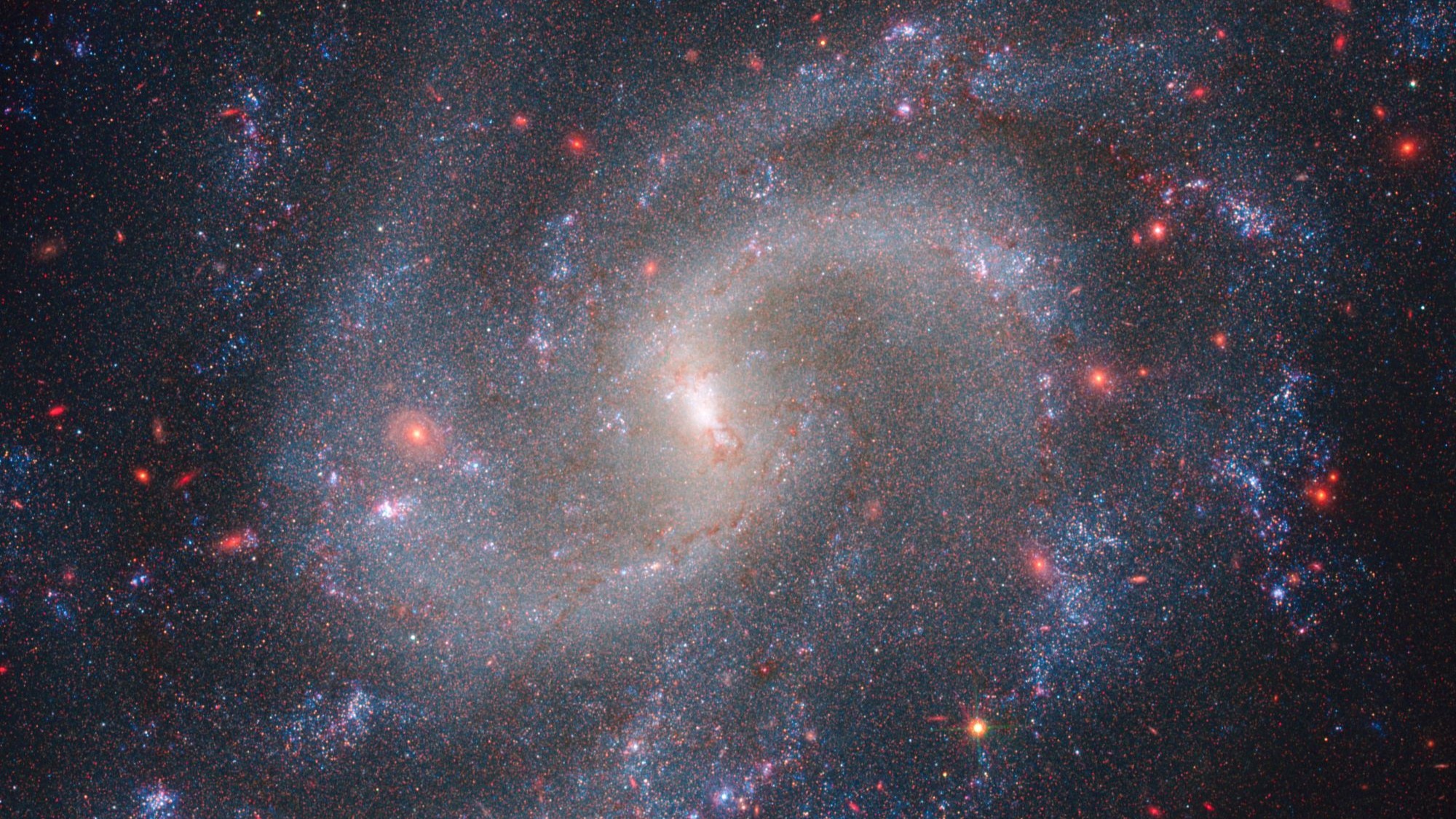

The universe is expanding—but astronomers can’t agree how fast. And NASA’s superstar observatory, the James Webb Space Telescope, just confirmed there’s a problem in our understanding of the stretching cosmos. JWST’s new measurements are the most precise of their kind, but they don’t clear up a baffling mismatch in the two methods scientists track this growth.
In 1929, astronomer Edwin Hubble discovered that all the galaxies we can see are moving away from us. The relationship between the distance to a galaxy and how fast it’s moving is now known as Hubble’s law. This law uses the also-eponymous Hubble constant to describe the rate at which the universe is expanding. It also tells us the age of the universe: Astronomers can use the Hubble constant to “rewind” time to when the universe would be a single point in space—the big bang.
There are two main ways to measure this fundamental number. One is by tracing tiny fluctuations in the cosmic microwave background from the beginning of the universe. The other is to watch flickering stars known as Cepheids. But those two methods disagree. This baffling mismatch is known as the Hubble tension, and it’s unclear if it’s a problem with our models of the universe or our measurements.
If it’s our measurements, the error might result from the way we survey Cepheid stars. Astronomers consider these objects to be a type of “standard candle,” a thing in space whose intrinsic brightness is known. We can observe how bright one of these stars looks in the sky. If it’s faint, it’s farther away. Brighter is closer.
Researchers use the luminosity of these stars like a yardstick to measure distance. Then, with methods such as spectroscopy, they can gauge the motion of far-off galaxies. Putting those observations together tells us how fast the universe is expanding.
[Related: NASA releases Hubble images of cotton candy-colored clouds in Orion Nebula]
“When we use Cepheids like this, we need to be very, very sure we’re measuring their brightnesses correctly, otherwise our distance measurements will be off. However, Cepheids can be in crowded parts of their galaxies and if our telescopes aren’t sensitive enough, we can’t clearly distinguish a Cepheid from the stars around it,” explains astronomer Tarini Konchady, a program officer at the National Academies of Sciences, Engineering, and Medicine.
Before JWST, the Hubble Space Telescope (HST) took the best measurements of Cepheid stars. HST couldn’t distinguish individual Cepheids where they were bunched in crowded regions, but JWST can—and it just did. JWST peered into two distant galaxies, and made measurements of the Hubble constant 2.5 times better than HST could.
“Webb’s measurements have dramatically cut the noise in the Cepheid measurements,” said project lead Adam Riess, an astronomer at Johns Hopkins University in a NASA press release. “This kind of improvement is the stuff astronomers dream of!”
One of JWST’s major advantages is its ability to look at the cosmos in infrared light, which helps cut through dust between our telescopes and the Cepheids. “Sharp infrared vision is one of the James Webb Space Telescope’s superpowers,” Riess said.
[Related: How old is the universe? Our answer keeps getting more precise.]
However, the new measurements matched up with those from HST, just with smaller error bars—so we can’t confidently pin the mystery on those old numbers.
The new results from Riess and team are just the beginning, though, and they still have many more galaxies to observe with JWST. “I think the jury is still out on whether the JWST has completely eliminated crowding as a solution to the Hubble tension,” says University of Chicago astronomer Abigail Lee. “Analyzing the data for the rest of the 42 galaxies [that JWST plans to observe] will illuminate whether the Hubble tension is alive and real or if there are indeed just errors in the Cepheid measurements.”
The fate of the universe, or at least the Hubble tension, doesn’t just hinge on JWST. Many other facilities will come online in the next few years, providing more evidence for this investigation. The Vera Rubin Observatory, for example, is going to scan the whole Southern sky every few nights when it opens next year, and will likely discover many more Cepheid stars.
“We’re at a point where astronomers are going to be deluged by the most sensitive and wide-reaching data yet,” says Konchady. There might not be a clear answer yet, but astronomers are surely on the case to figure out this mystery.
This post has been updated to include additional details about astronomical methods for measuring the expansion rate.
